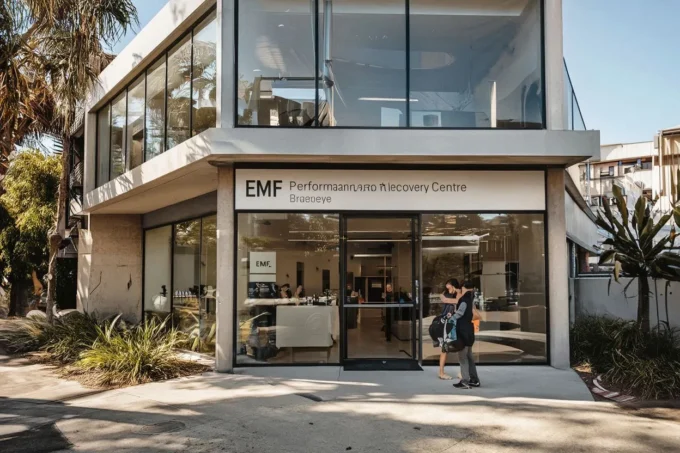Today we are talking about workcover qld payout examples, Knowing how WorkCover QLD compensation are calculated is essential when it comes to workplace injuries in Queensland. Employees who have been hurt on the job are eligible for benefits through WorkCover Queensland. For people who are unable to work because of a workplace injury, this system is intended to offer financial assistance and pay for medical costs. However, a variety of variables may affect how much compensation you are eligible for. To give you a better idea of what to anticipate, we will dissect the variables that affect WorkCover QLD payouts in this tutorial and offer examples.
What is Workcover QLD Payout Examples?
At workcover qld payout examples, The state’s mandatory workers’ compensation insurer, WorkCover Queensland, offers coverage for employees hurt on the job. It provides a number of advantages, such as medical care, rehabilitation assistance, and compensation for lost income. This system is intended to make sure that workers who have an injury at work are not placed in a precarious financial situation. Additionally, it covers the relatives of employees in the event that the injury results in death.
Key Benefits of WorkCover QLD:
- Weekly Payments for Lost Wages – Workers can receive payments to replace lost income due to their injury.
- Medical Expenses – WorkCover covers the cost of medical treatment, including hospital stays, surgeries, and rehabilitation.
- Lump-Sum Payments – In some cases, a lump-sum payout may be awarded if the injury causes long-term disability.
- Rehabilitation Support – WorkCover offers rehabilitation services to help injured workers return to work.
How is the Workcover QLD Payout Examples Payout Determined?
The severity of the injury, how it affects your capacity to work, and the kind of injury you have all affect how much compensation you can get. WorkCover QLD calculates your payout using a systematic method.
1. Type of Injury
At workcover qld payout examples, Different injuries result in varying compensation amounts. Some injuries are straightforward, while others, such as psychological injuries, may require more complex evaluation. Injuries are typically categorized as either:
- Physical Injuries: These include broken bones, sprains, strains, amputations, and head or spinal injuries. Depending on the severity, physical injuries often result in higher payouts.
- Psychological Injuries: If a workplace injury causes psychological distress, such as post-traumatic stress disorder (PTSD), anxiety, or depression, you may be eligible for compensation. The payout for psychological injuries can vary significantly based on medical reports and evidence.
2. Degree of Permanent Impairment
At workcover qld payout examples, The extent to which your injury has impaired your ability to perform work is a major factor in determining your payout. WorkCover QLD uses the AMA Guides to the Evaluation of Permanent Impairment to assess the permanent disability caused by an injury. Based on the degree of impairment, a compensation amount is calculated.
For example:
- Minor Injuries (0-10% impairment) – Workers may receive a small lump-sum payout.
- Moderate Injuries (11-20% impairment) – A medium payout may be awarded, which could range from several thousand dollars to tens of thousands.
- Severe Injuries (greater than 20% impairment) – Workers with severe injuries may qualify for higher payouts, potentially reaching hundreds of thousands of dollars.
3. Weekly Earnings
WorkCover QLD calculates weekly compensation based on your average weekly earnings before the injury. For instance, if your average weekly earnings were $1,000 before the injury, you may be entitled to receive a percentage of this amount (usually 85%) while you recover.
4. Medical Costs and Rehabilitation
In addition to weekly payments, WorkCover QLD will cover medical and rehabilitation expenses. This includes the cost of surgery, hospital stays, physiotherapy, and mental health support. If the injury results in permanent disability, WorkCover QLD may also pay for future medical treatments.
5. Return-to-Work Plan
If you are unable to return to your previous job due to the injury, WorkCover may assist in finding alternate employment or provide retraining opportunities. The costs associated with returning to work, including the cost of job retraining, are also covered by WorkCover.
WorkCover QLD Payout Examples
At workcover qld payout examples, To better understand the potential payouts, here are a few examples:
Example 1: Mild Back Injury
A worker suffers a mild back injury and is unable to perform their usual duties for a few months. Their medical bills amount to $2,500, and their weekly earnings are $800. Since the injury doesn’t result in permanent impairment, they receive:
- Weekly Compensation: 85% of $800 = $680 per week for 12 weeks.
- Medical Expenses: $2,500 covered for treatment and rehabilitation.
Total Payout: $8,760 (weekly payments) + $2,500 (medical expenses) = $11,260
Example 2: Broken Leg
A worker suffers a broken leg after a workplace accident, which requires surgery and rehabilitation. Their medical costs amount to $15,000, and they are unable to work for six months. Their weekly earnings are $1,200.
- Weekly Compensation: 85% of $1,200 = $1,020 per week for 26 weeks.
- Medical Expenses: $15,000 covered for surgery and rehabilitation.
Total Payout: $26,520 (weekly payments) + $15,000 (medical expenses) = $41,520
Example 3: Permanent Disability from a Spinal Injury
A worker suffers a spinal injury that results in permanent partial disability. Their average weekly earnings are $1,500, and they have been assessed with a 25% permanent impairment.
- Weekly Compensation: 85% of $1,500 = $1,275 per week for 12 weeks.
- Lump-Sum Payout for Permanent Impairment: Based on the impairment rating, the worker is entitled to a lump sum payout of $75,000.
- Medical Expenses: Ongoing treatments and rehabilitation costs are covered.
Total Payout: $15,300 (weekly payments) + $75,000 (lump-sum payout) = $90,300
How to Maximize Your Workcover QLD Payout Examples
At workcover qld payout examples, There are several steps you can take to ensure you receive the maximum compensation available under WorkCover QLD:
- Report the Injury Promptly: Report your injury to your employer and WorkCover as soon as possible to avoid delays in your claim.
- Seek Legal Advice: A lawyer specializing in workers’ compensation can help you navigate the process and ensure you receive fair compensation.
- Keep Medical Records: Ensure you have detailed medical records to support your claim. This will be important when assessing the severity of your injury and its long-term effects.
- Understand Your Rights: Be aware of your rights under the workers’ compensation system, including your right to dispute any decisions you feel are unfair.
Conclusion
At workcover qld payout examples, Payouts from WorkCover QLD offer crucial financial assistance to employees who sustain workplace injuries. The severity of the injuries, the degree of damage, and your medical expenses all affect how much you get. You can make sure you get the money you are due by learning how WorkCover determines payouts and getting the right legal and medical counsel.

















Leave a comment